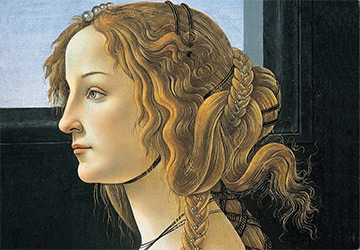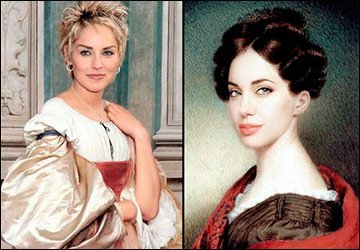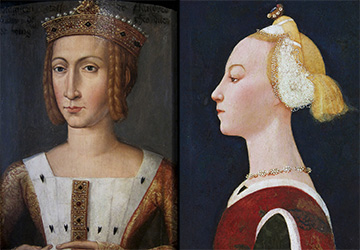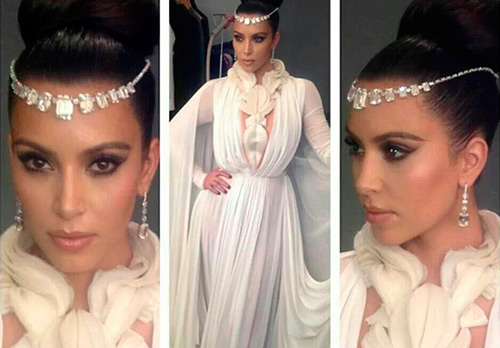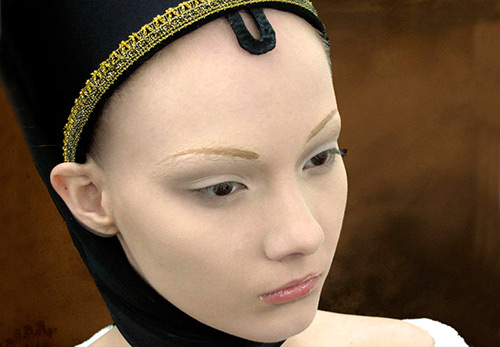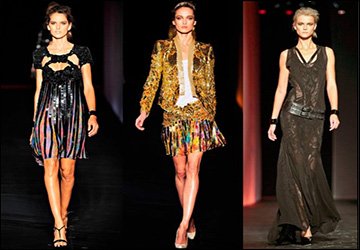Art
Italian Renaissance fashion and costume
The Renaissance or Renaissance era was the heyday of European painting, architecture and fashionable clothing. It was at this time (XV-XVI centuries) that such artists as Leonardo da Vinci, Michelangelo, Raphael lived and created their outstanding works.
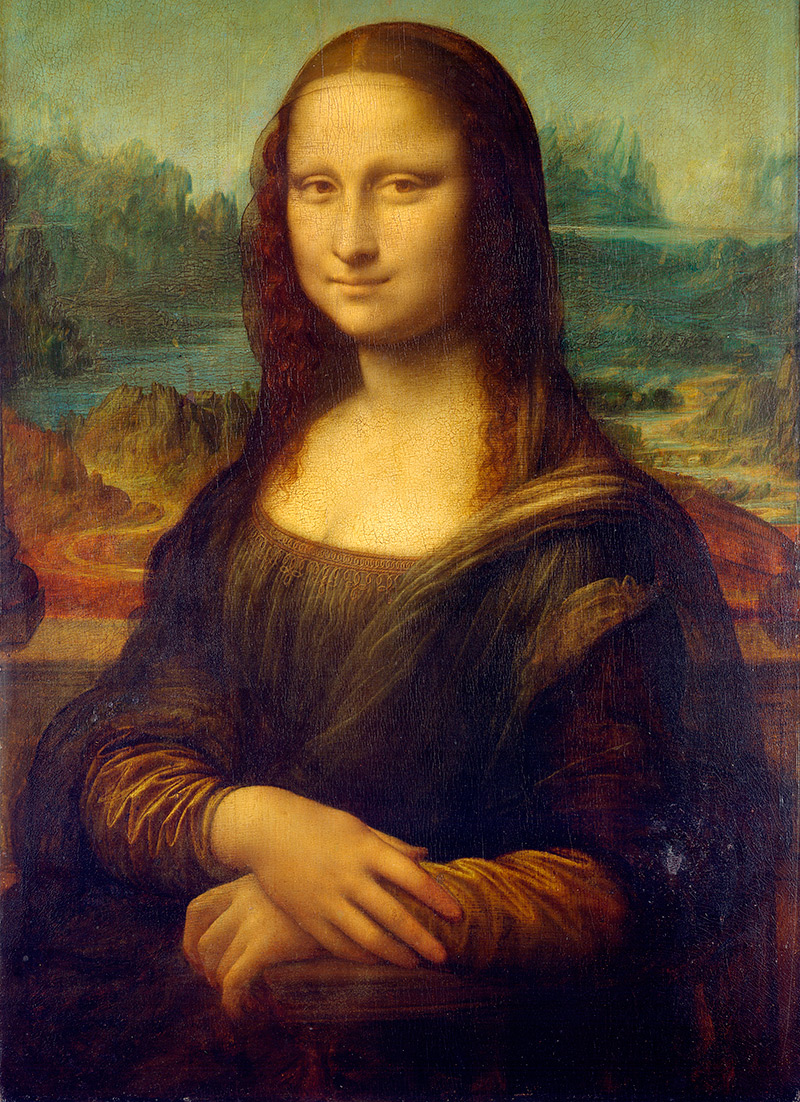
Leonardo da Vinci
Gioconda
Italy was the center of the Renaissance culture. In the 15th century, all painters, sculptors and architects of Italy aspired to Florence. After all, it was in Florence that the powerful and influential Medici family lived. The Medici family not only possessed untold wealth, but also actively supported the arts.
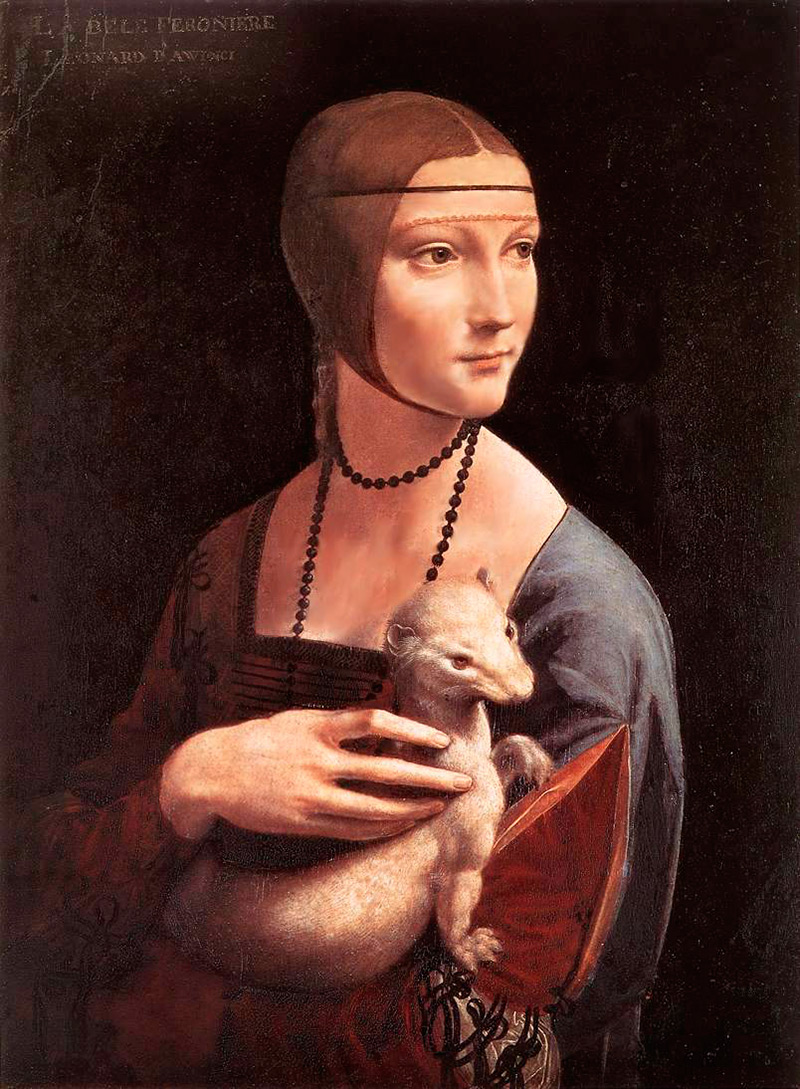
Leonardo da Vinci
Portrait of a Lady with an Ermine
It was largely thanks to the Medici that Florence became the center of the development of art in the 15th century. Sandro Botticelli, Leonardo da Vinci, Michelangelo, the famous architect Filippo Brunelleschi worked in this city. But not only was the city of artists in the 15th century Florence, she was also the capital of fashion. Florentine fabrics were famous far beyond the borders of Italy, and Florentine lace also brought fame to the city.
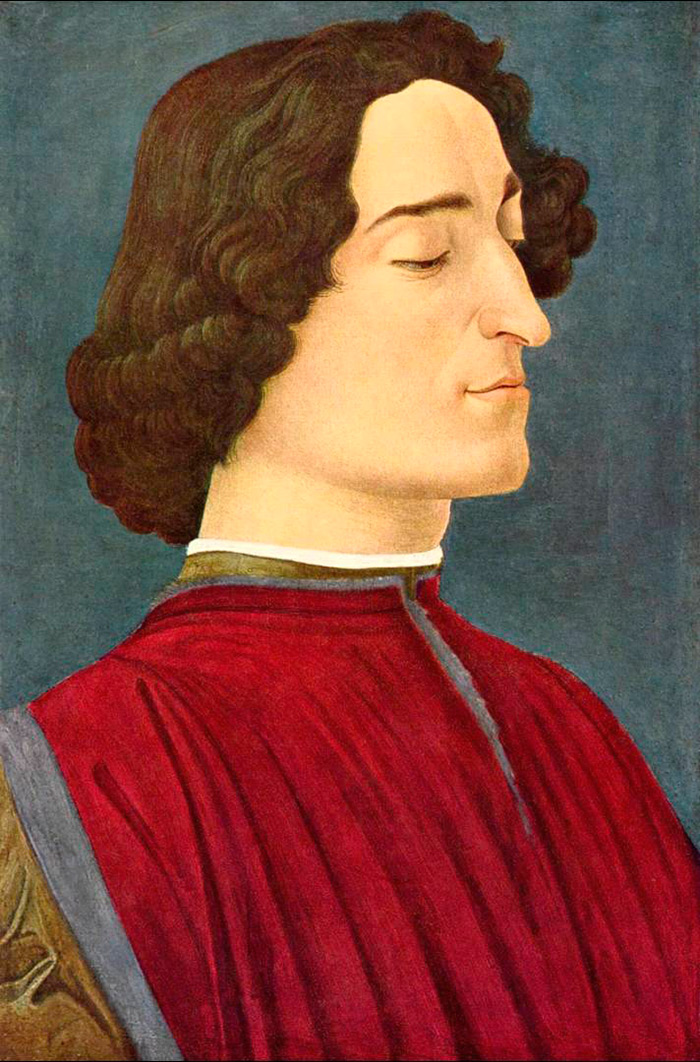
Sandro Botticelli
Portrait of Giuliano Medici
Fifteenth-century Florence fashion was vibrant and free. She replaced the Middle Ages - the period of closed dresses and obligatory headdresses, the time of the absolute influence of the church on the clothes of its parishioners.
During the Renaissance, the influence of the church on society weakens. The omnipotence of the Catholic Church was shaken by the Great Geographical Discoveries (America was discovered in the 15th century), and new inventions (for example, printing appeared in the 15th century), and the movement for the reformation of the Catholic Church.
In Germany, the church is opposed by the priest Martin Luther, who is supported by the common people, and soon a Lutheran church independent of the Pope is formed. Appears its own, Anglican, church in England. Now the English Church is subject only to the King of England, but not to the Pope.
The changes taking place in all spheres of society in the 15th century are reflected in fashion.
Clothes become loose, with wide sleeves, clothes are decorated with many cuts - on the waist line, on the sleeves. These cuts are made both to show the expensive (sometimes even silk) fabric of the undershirts, and for ease of movement. Sleeves-puffs are becoming fashionable.
A neckline appears in a woman's dress. Very often, cutouts are made not only in the front, but also on the back of the dress - always in the shape of a triangle to emphasize the length of the neck.
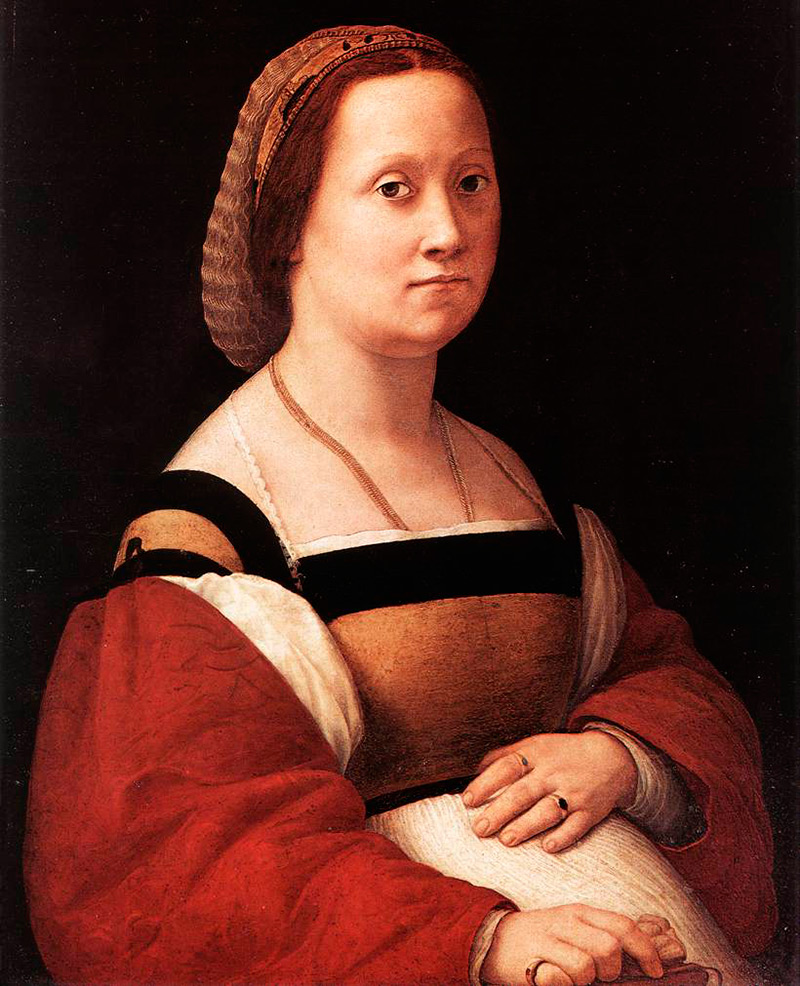
Raphael
Portrait of a Woman (Donna Gravida)
During the Renaissance in Italy, women were considered beautiful with a long neck and a high forehead. Women still, as in the Middle Ages, to emphasize the height of the forehead, shaved off the hair above the forehead to the thickness of two fingers. Not dyed eyebrows and eyelashes. But perfume was used in large quantities. They blushed cheeks, painted lips.
Men in Florence wore a mid-thigh length undershirt decorated with lace at the cuffs and collar. The collar and cuffs of the undershirt were never hidden under outerwear, so that the expensive lace in those days could be seen. The sleeves of the undershirt were puffy and were passed through the cuts of the sleeves of the outer garment.
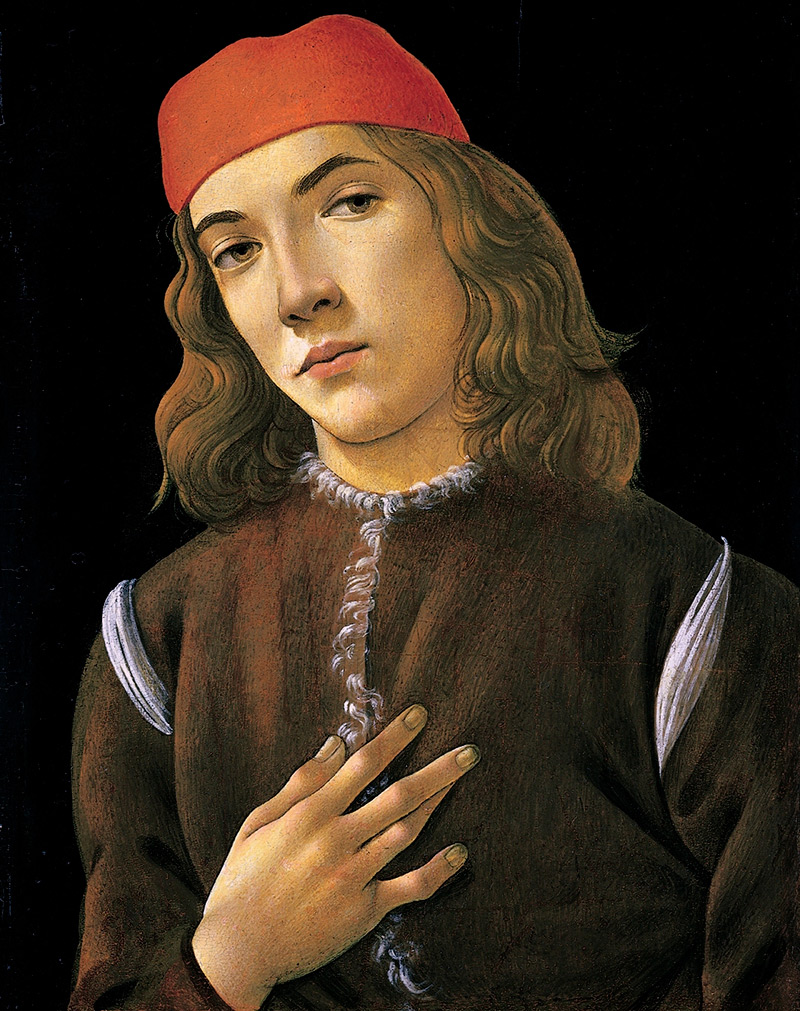
Sandro Botticelli
Portrait of a young man
On the legs, they wore stockings and short tops, up to the middle of the thigh, pantaloons (they are also leggings). Leggings were sewn most often from velvet fabric. Since the 16th century, such trousers will become slightly longer and will be fastened with a button under the knee. The name "pantaloons" was given to this element of men's clothing in honor of an Italian named Pantaloni, who was the first to wear such pants.
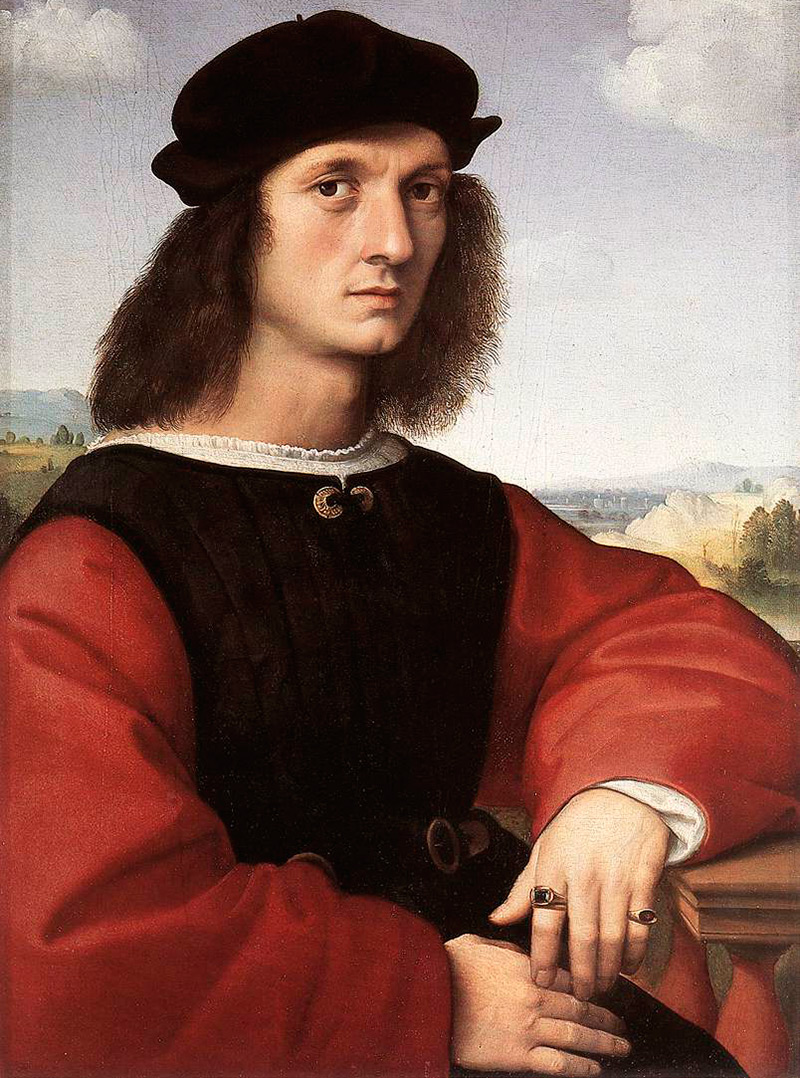
Raphael
Portrait of Alolo Doni
Outerwear was pricks - short open-top clothing fastened with buttons or with lacing. The tunic could be either with a high standing collar or with cutouts of various shapes. Another option for outerwear was simarra - swing clothes of various lengths with long wide sleeves. Cimarra is found not only in men's wardrobe, but also in women's. Women wore cimarra over their dresses.
Also, the men of Florence wore various raincoats. For example, a tabar is a cape in the form of a short amice (a cloak not sewn on the sides) with a loosely hanging back and a belted shelf. Berets were the favorite headdress in Florence.
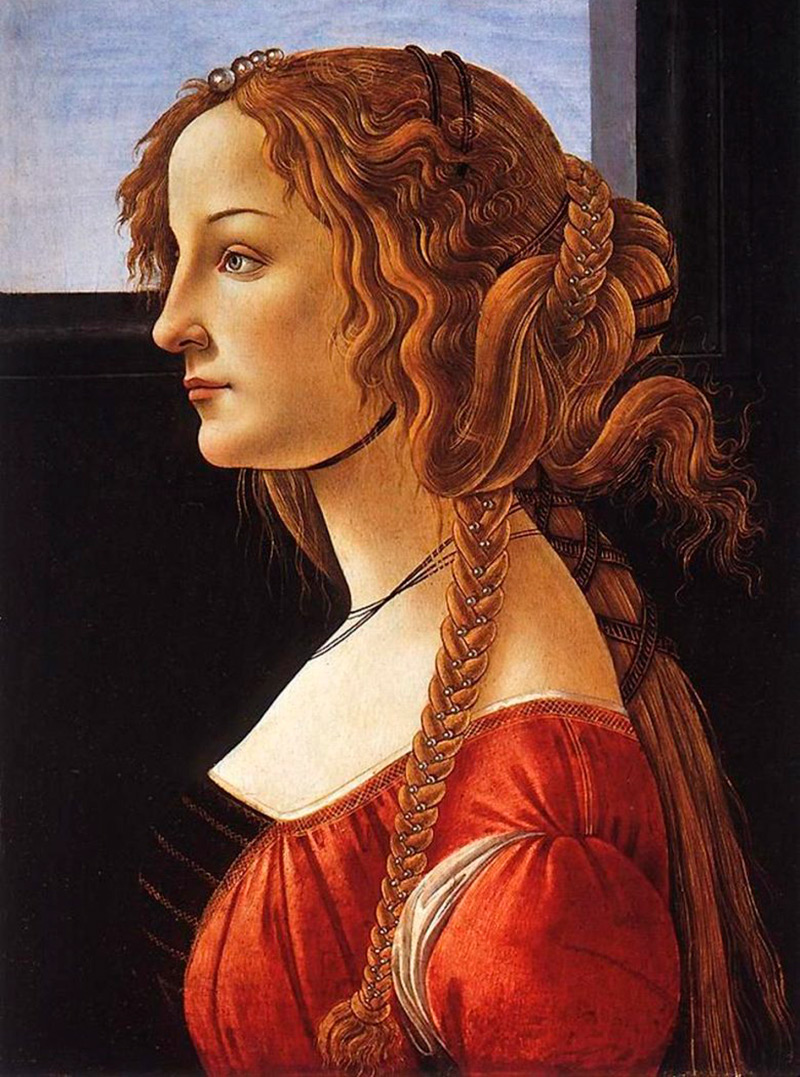
Sandro Botticelli
Portrait of Simonetta Vespucci
Women wore dresses with a neckline, slits on the sleeves, puff sleeves and lacing in the front. Such dresses were called gamurra.
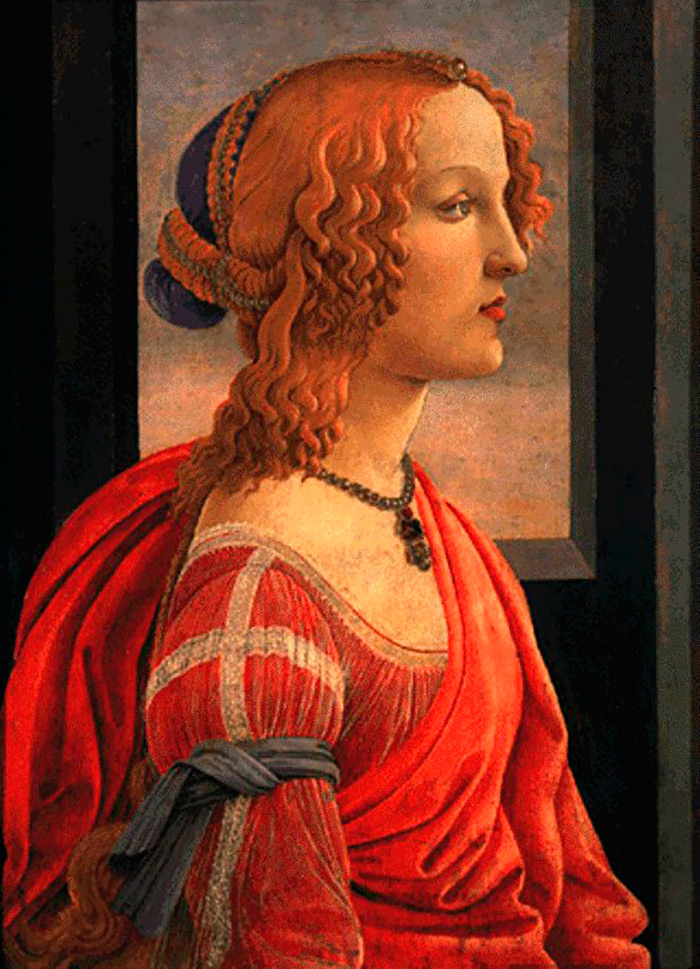
Simonetta Vespucci
Another option for a woman's dress was the kirtle dress. Kirtle is a dress with a narrow bodice and long lacing, with or without short sleeves (in this case, the sleeves are fastened separately).
Dresses were sewn from expensive and bright fabrics. As in the men's suit, the white fabric of the lower shirt was always visible through the slits in the sleeves of the upper dress.
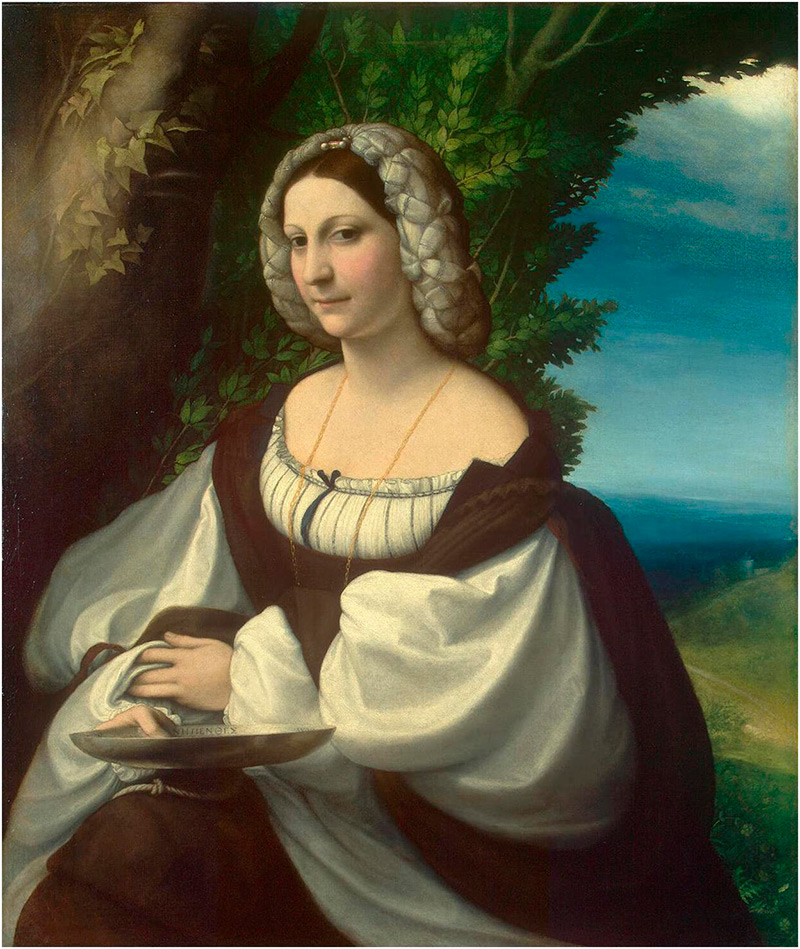
Antonio Allegri, nicknamed Correggio.
Portrait of a lady
The hairstyles of the inhabitants of Florence were also interesting. Particularly popular was the hairstyle called the "Florentine braid" - the hair above the ears was laid in the form of semicircles, divided into a straight parting, a long braid decorated with ribbons and strands of pearls fell on the back of the back. There were also more complex options for this hairstyle.
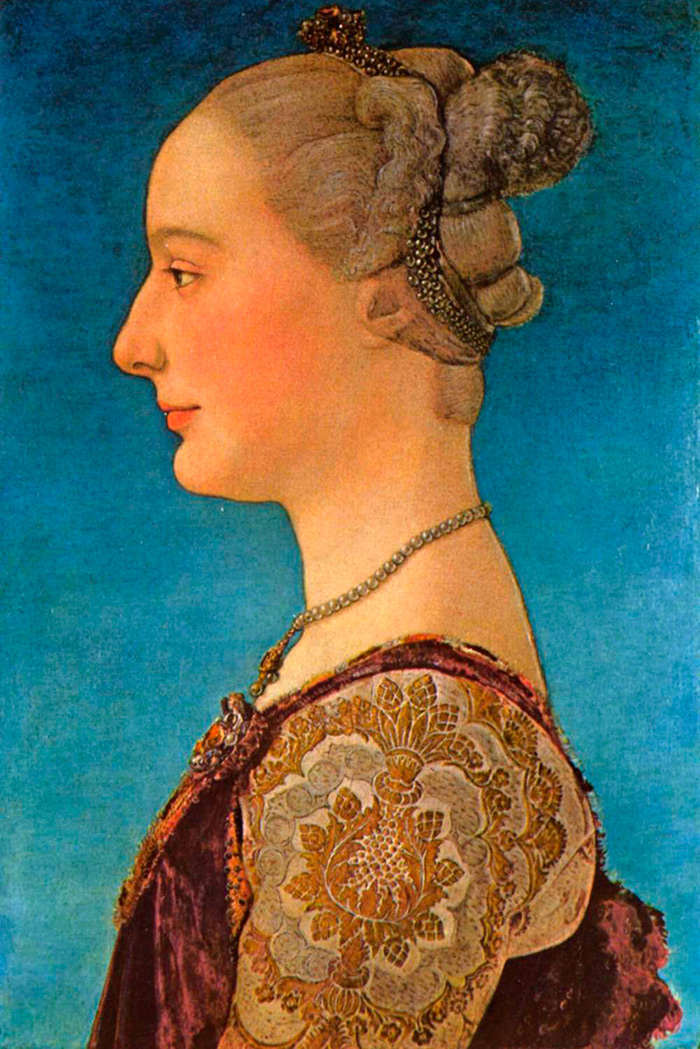
Antonio Pollaiolo
Portrait of a lady
On the sleeve of the dress, a pomegranate flower pattern is a very popular pattern on Florentine fabrics.
Perms were also in vogue. Both men and women curled their hair. Just as Renaissance artists drew on the art traditions of Ancient Greece and Ancient Rome, so the Renaissance fashionistas drew inspiration from the images of the gods of Antiquity. In addition to curling, blonde hair was also in vogue. After all, the ancient Greek gods and goddesses were described as "golden-haired."
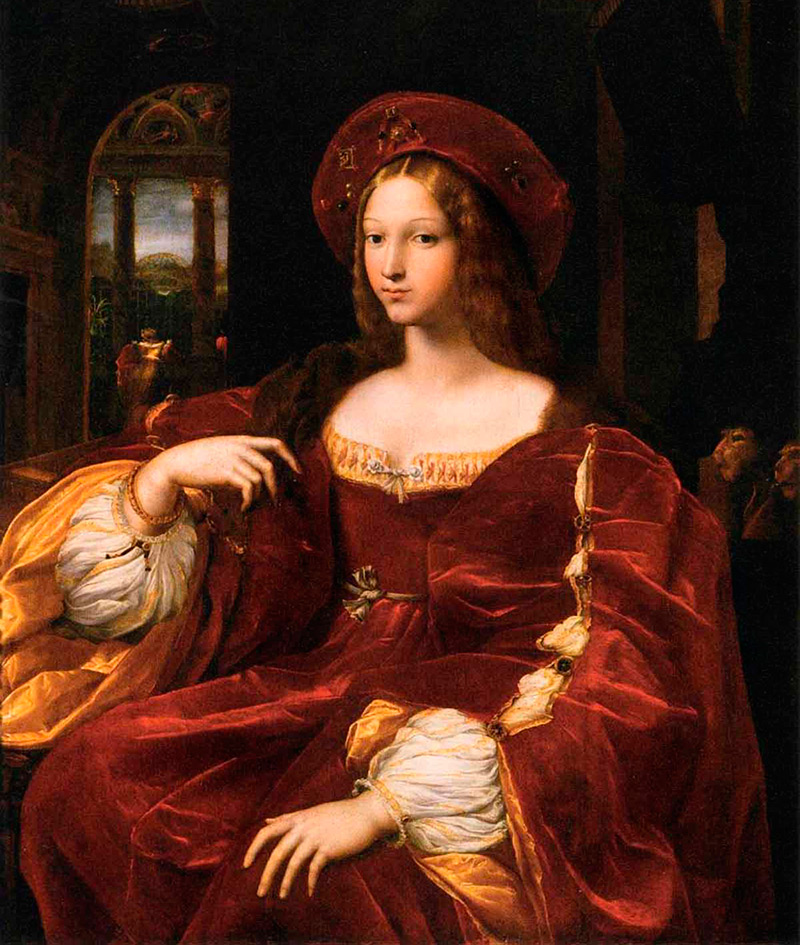
Raphael
Portrait of John of Aragon
Especially the fashion for blonde hair will spread in Venice. Venetians even wore straw hats without a bottom, in which their hair was laid out on the brim in order to burn out in the sun, they acquire a lighter shade.
Venice was the second capital of Italian Renaissance fashion after Florence. Throughout the 16th century, Venice dictated fashion in Italy. Venice in the 16th century will also become a center of art. It was in Venice that such late Renaissance artists as Titian and Giorgione created their masterpieces.
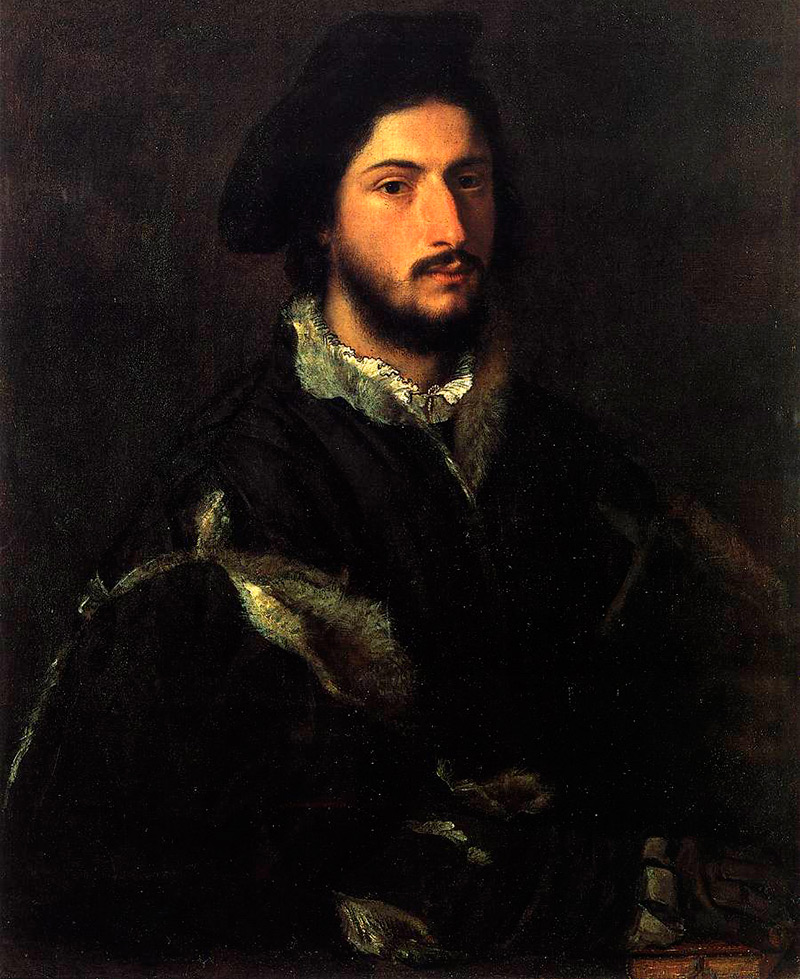
Titian
Portrait of Tomaso Vincenzo Mosty
In the 16th century, the fashion of Venice was greatly influenced by the fashion of Spain. Women's dresses are becoming more closed. The sleeves are tapered, the puffs remain only in the shoulder area. Under the influence of Spain, the colors of clothing also become darker. Men start to wear small beards, while in Florence men walked around with shaved faces.
The most common fabric in a men's suit is becoming velvet... Clothes were often decorated with fur and embroidery.
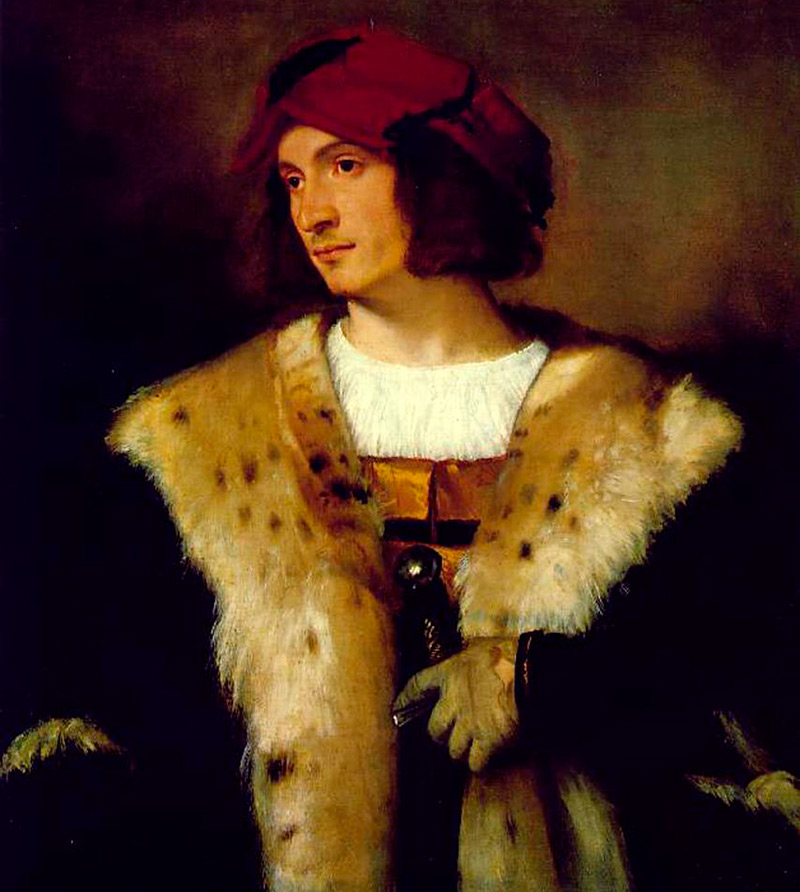
Titian
Portrait of a man in a red hat
The outer garment was a purpuen, preserved in a man's suit since the Middle Ages, with a deep cut on the chest. They wore stockings and trousers eaux-de-chausses on their feet - short and spherical in shape.
Women in Venice also favored dark, expensive velvet fabrics. They wore dresses with puff sleeves and pleated skirts. The neckline was often covered up by the absence of a cutout on the undershirt. Thus, the neckline of the dress featured pleated undershirts with ruffles and rich trimmings.
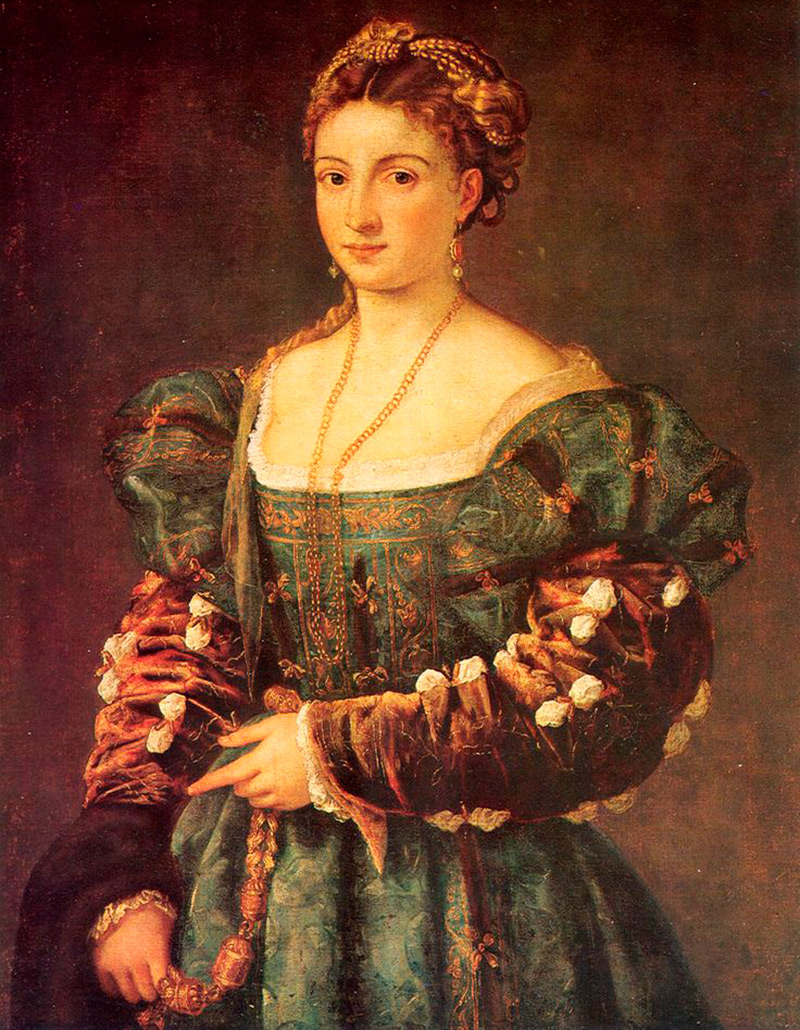
Titian
Gorgeous
Over the dress, women could wear black velvet cloaks, as well as robes and capes, fastened with brooches or buckles.
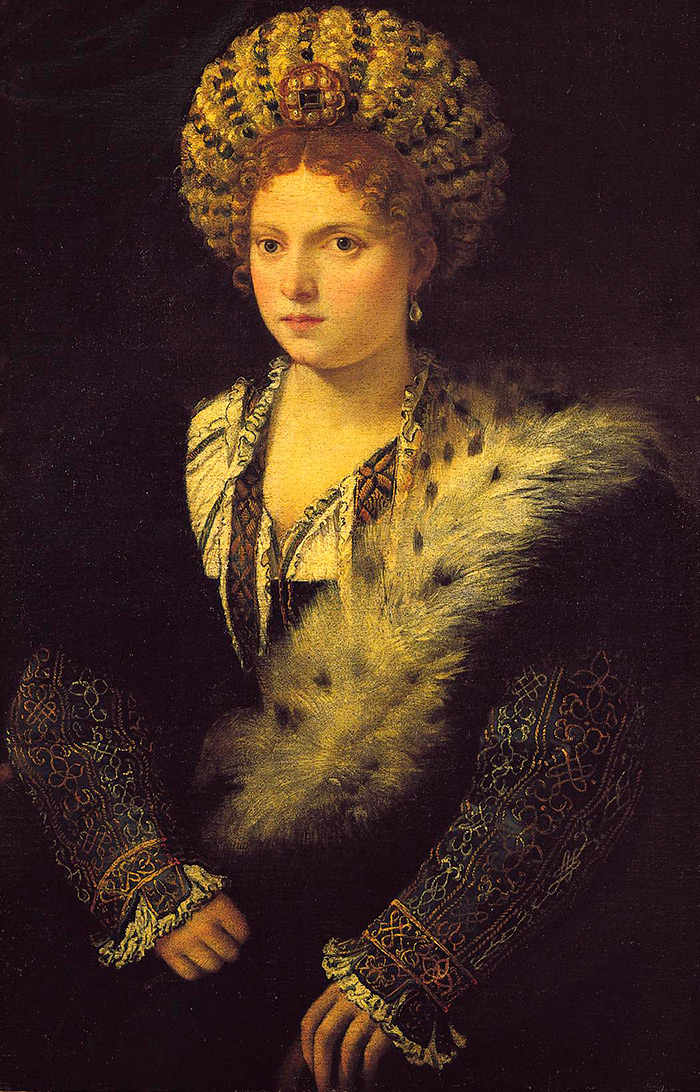
Titian
Portrait of Isabella
Appears in Venice of the XVI century and the fashion to wear masks or half masks made of black fabric.Noble ladies often covered their faces with such masks when leaving the house and heading to visit their secret lovers.
In Venice, the fashion for wearing fans and gloves is emerging. Moreover, gloves are becoming an invariable accessory for both women's and men's suits.
However, since the middle of the 16th century, Italy has had less and less influence on European fashion. Initially, Spain took the palm from Italy, and from the 17th century - France.
Comments and Reviews
Add a comment
Rating news
Shades of clothing that make women look younger
What shades of hair make women younger: rules and photos
Funny wedding dresses - photos and ideas
12 most expensive down jackets for the winter
How to look 25 at 40: tips from supermodels
Beautiful schoolgirls
Anti-aging haircuts and hairstyles for women
Fashionable skirts for autumn and winter
Fashionable women's trousers for the cold season
Fashionable and stylish sandals for summer 2024
Spring-summer 2024
 Fashionable dresses and tops with thin spaghetti straps
Fashionable dresses and tops with thin spaghetti straps
 Bandana tops: how to wear stylishly and beautifully
Bandana tops: how to wear stylishly and beautifully
 How to put together the perfect men's wardrobe for the summer
How to put together the perfect men's wardrobe for the summer
 Trendy shorts for spring-summer 2024
Trendy shorts for spring-summer 2024
 Fashionable skirts for spring-summer 2024: a guide to online shopping
Fashionable skirts for spring-summer 2024: a guide to online shopping
 The most fashionable dresses spring-summer 2024: styles and colors
The most fashionable dresses spring-summer 2024: styles and colors
 Fashionable total look 2024: image ideas and trends
Fashionable total look 2024: image ideas and trends
